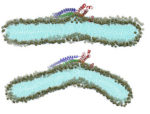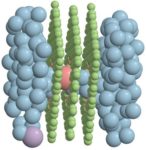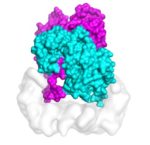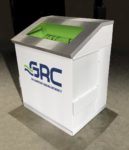Scientists are preparing a massive computer model of the coronavirus that they expect will give insight into how it infects in the body. They’ve taken the first steps, testing the first parts of the model and optimizing code on the Frontera supercomputer at the Texas Advanced Computing Center of UT Austin. The knowledge gained from the full model can help researchers design new drugs and vaccines to combat the coronavirus.
XSEDE Supercomputers Complete Simulations Pertinent to coronavirus, DNA Replication
Fundamental research supported by XSEDE supercomputers could help lead to new strategies and better technology that combats infectious and genetic diseases. “Chemical reactions, life, doesn’t happen that quickly,” Roston said. “It happens on a timescale of people talking to each other. Bridging this gap in timescale of many, many orders of magnitude requires many steps in your simulations. It very quickly becomes computationally intractable.”
Podcast: Supercomputers Drive Ion Transport Research
In this TACC podcat, host Jorge Salazar discusses ion transport research with Amir Haji-Akbari, an assistant professor of chemical and environmental engineering at Yale University. “Scientists are using supercomputers to help understand the relatively rare event of salts in water passing through atomically-thin nanoporous membranes. This research could not only help make progress in desalination for fresh water; it has applications in decontaminating the environment, better pharmaceuticals, and more.”
Podcast: Simulating Galaxy Clusters with XSEDE Supercomputers
In this TACC podcast, researchers describe how they are using XSEDE supercomputers to run some of the highest resolution simulations ever of galaxy clusters. One really cool thing about simulations is that we know what’s going on everywhere inside the simulated box,” Butsky said. “We can make some synthetic observations and compare them to what we actually see in absorption spectra and then connect the dots and match the spectra that’s observed and try to understand what’s really going on in this simulated box.”
Deep Learning for Predicting Severe Weather
Researchers from Rice University have introduced a data-driven framework that formulates extreme weather prediction as a pattern recognition problem, employing state-of-the-art deep learning techniques. “In this paper, we show that with deep learning you can do analog forecasting with very complicated weather data — there’s a lot of promise in this approach.”
XSEDE Supercomputers Advance Skin Cancer Research
In this TACC podcast, UC Berkeley scientists describe how they are using powerful supercomputers to uncover the mechanism that activates cell mutations found in about 50 percent of melanomas. “The study’s computational challenges involved molecular dynamics simulations that modeled the protein at the atomic level, determining the forces of every atom on every other atom for a system of about 200,000 atoms at time steps of two femtoseconds.”
NSF funds Tapis Project for Data-intensive Research
Scientists looking to reduce their complexity to research and add a new computational tool to their tool belt can explore the Tapis Project. Newly funded with a $2.9 million grant from NSF, the Tapis software platform aims to help researchers more easily leverage powerful supercomputers and integrate and manage data from different and distant sources. “The easiest way to describe Tapis is that it’s a web-based application that provides all the tools a modern scientist needs to do data-intensive, computationally-intensive research.”
Podcast: How the Frontera Supercomputer will power research at UT Austin
In this podcast, Dr. Greg Fenves, President, the University of Texas at Austin describes how the new Frontera supercomputer at TACC will drive academic research. “The University of Texas at Austin has claimed a leadership role in supercomputing with the top academic system in the world, Frontera, located at the Texas Advanced Computing Center (TACC). The National Science Foundation awarded TACC $60 million for building and operating Frontera, the #5 fastest computer in the world according to the June 2019 Top500 rankings.”
Podcast: Inside TACC’s Frontera Supercomputer
In this Intel Chip Chat podcast, Dan Stanzione from TACC discusses the architecture and capabilities of Frontera, TACC’s newest HPC cluster. “Frontera’s architecture includes 8,000 servers, each powered by 2nd Generation Intel Xeon Scalable processors. The cluster includes hundreds of thousands of processing cores and a liquid-cooled infrastructure enabling a higher clock rate for even more performance.”
NVIDIA Powers GRC Immersion Cooled System at TACC
Today GRC announced its joint project with NVIDIA to help power a GPU-intensive computing subsystem for TACC’s Frontera Supercomputer, the world’s largest academic supercomputer. GRC is proud of its long history with TACC and we’re delighted to have been able to collaborate once again with NVIDIA to help power the next generation of academic research,” […]













